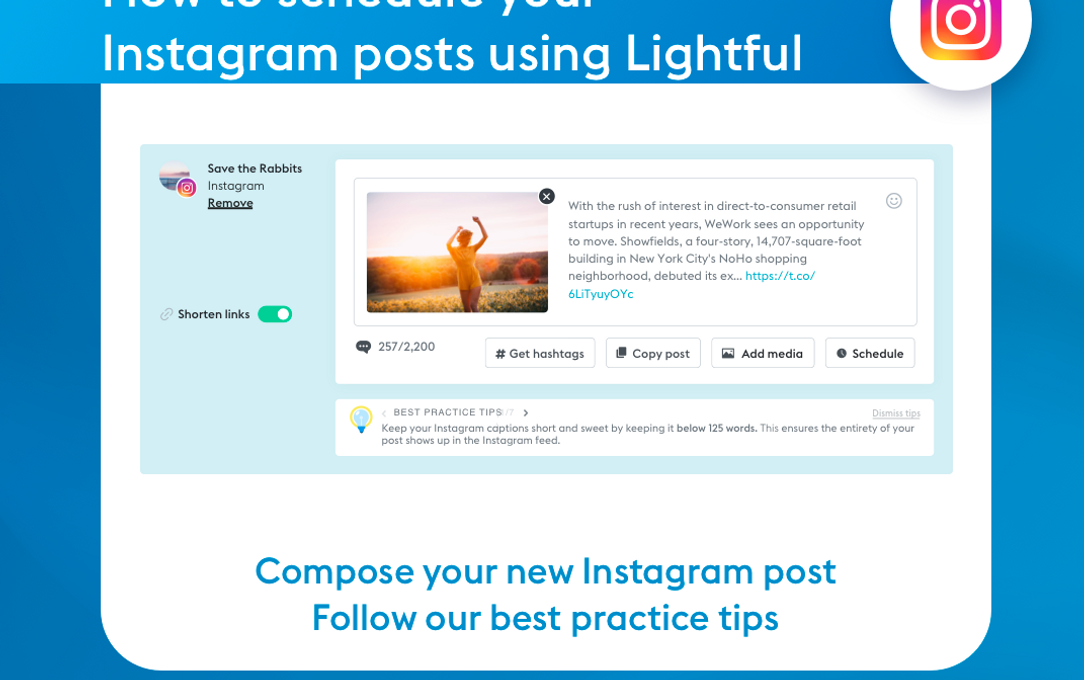How To Build A Social Strategy

With the power of social media, you can now capture the attention of potential donors and supporters more than ever before – and gain insight into what they want from your organisation. But you need a clear strategy.
In an increasingly noisy digital space, your charity or social enterprise needs to be part of the conversation – and social media is the tool to help you engage, attract and motivate supporters. In order to this effectively, you need to have a social media strategy, an engaging content creation and distribution process and interact with your audience online to reach your goals – whether that’s fundraising or advocacy related.
At Lightful, we aim to inspire and motivate you to harness the power of social media to best achieve your organisational goals, with our insightful listening feeds, smart scheduling tools and collaborative features. We will explore the steps it takes to create an effective strategy, to help you articulate your goals and streamline processes.
Goals
Why are you on social media? Most charities now have a presence on social media – how are you using it?
Are you simply taking the fundraising ask that works well through street or telephone fundraising online? How are you engaging your supporters online? Simply having a presence on social media isn’t enough – you need to have a strategy in place. We will take you through a few challenges that many organisations face, and how you can begin to overcome them.
Having a presence across social media platforms does not equate to impact – you won’t get anywhere without setting targets or goals.
What equals impact? A strategy and an understanding that social media is a conversation. Identify your goals first – why are you on social media? It can be as broad as getting people into your next event, getting your advocacy actions off of the ground, or getting funds in to get your latest project going – give your social media activity purpose, and something to work towards.
Audit
Now that you’ve identified your goals, take a step back to take a look at your existing activity. Take stock of your audience, the evidence (backed up with analytics), platforms, networks, and content. When you do this, it’s useful to use the POST (People, Objective, Social Optimisation and Tools) method, something nonprofit innovator Beth Kanter speaks of at length.
People
First off – who are your audience? Describe two or three characteristics of who you are trying to target. Try to answer these four questions when you’re developing your strategy:
- What motivates them?
- Who do they listen to?
- What’s important to them?
- What makes them take action?
Objective
Once you’ve got your intended audience in mind, what do you want to get out of your digital strategy? Donations? Sign ups? Driving website traffic? Define what success looks like to you, and think mindfully about what you are measuring – don’t chase after vanity metrics.
Social Optimisation
Create a plan and workflow for engagement, content, and social media champions. How will you be tactically engaging your audience in order to meet your objectives? What resources and capacity do you have in-house to manage this? How can you amplify your content by engaging with influencers? Social optimisation is your plan for engagement.
Tools
What platforms are you on, and why? Think about where your audience are, and think tactically about where you need to be, and where you should be spending your time. It’s always better to do one or two platforms well, rather than bring new ones on unnecessarily, so avoid jumping on the bandwagon every time a new platform launches. Is it right for your organisation? Does it fit with your tone of voice?
Content
Once you have goals in place, and you’ve audited your existing presence, you need to be thinking about the types of content you should produce – and how you are distributing it, which is just as important. Content production doesn’t have to be expensive, and amplifying it properly is essential.
Charities and social enterprises can create great content even on a shoestring budget because authenticity and storytelling are the key ingredients for engaging content, regardless of how the content is produced. Remember – content doesn’t need to go viral to be successful.
Analytics
Data is the most powerful tool charities have to understand who their enthusiasts are and how they can better communicate with them, in order to build more meaningful relationships that lead to loyalty and increased giving over time. A social strategy isn’t a static document – it’s something that is fluid, and will be tested and constantly evolving over time. Harnessing your analytics to see what works, and what doesn’t, is key.
Not sure what you should look for?
On Twitter, you can find out things like what your followers top 10 interests are, and who they follow, which can help inform content creation and your influencer engagement strategy. You can also discover your most influential sharers, who you can cultivate to be social media ambassadors, and things like best days for engagement so you can streamline processes internally.
On Facebook, you can discover the virality of a post, visits and audience retention, as well as the locations and demographics of your audience.
Internalising Findings
Start small and build incrementally – talk with your team openly about what your data tells you. Your social media strategy will be informed by what you learn through the data you’ve gathered from your analytics.
A data-led digital culture is based on learning and growing, and is flexible and evidence-based – it will help you understand the wants and needs of your supporters, and keep them connected with your cause.
Clearly articulating your social strategy allows your organisation to take a more holistic approach, and make your social media activity more meaningful and impactful. This is most successful when it is integrated into the wider marketing or communications strategy – social media should never be a bolt on.
Erin Niimi Longhurst
@erinniimi
Latest articles

In a world of growing uncertainty, small and local non-profit organisations often find themselves with competing priorities and struggle to plan how to allocate their available resources. Despite the increasing demand for their vital work, they are not always able to allocate the funds they receive to strategic planning and future growth.

As the world becomes more digitally-focused, it’s essential for nonprofits to have a digital presence. With more and more options for online engagement, we know that this can be challenging for nonprofits to tackle. But, we also know that it is a huge opportunity to increase audience engagement, awareness and fundraising. To help nonprofits navigate this, we’re going to explore the “whys” and “hows” of creating a nonprofit digital strategy. We’re even providing a free digital strategy canvas to help nonprofits improve their online presence in just a few steps.
Related posts

Facebook recently announced that they are removing Facebook Analytics. Facebook Analytics was a tool that allowed individuals to see how their Facebook followers were interacting with their pages and content. As of June 2021, it is no longer available, but what does this mean for your organisation and your social media data?

Instagram is a visual channel that helps you build an engaged community of people who are following your cause.
See who we help
Contact us
Want to learn more?
Email Jonathan and start a conversation





